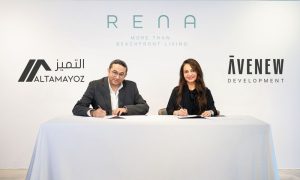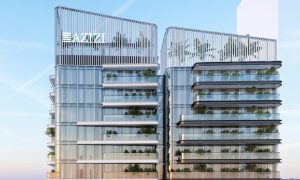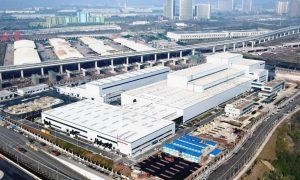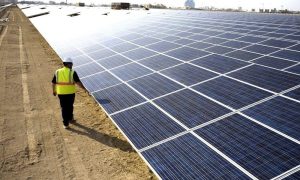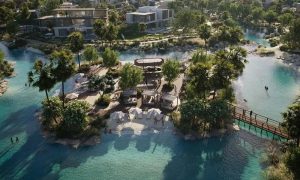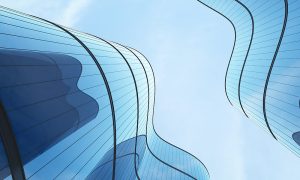Greening the existing building stock of the UAE
Thom Bohlen, Chief Technical Officer and LEED AP at the Middle East Centre for Sustainable Development, explains why the greenest buildings are those which already exist “It was the best of times, it was the worst of times, it was the age of wisdom, it was the age of foolishness, it was the epoch of […]

Thom Bohlen, Chief Technical Officer and LEED AP at the Middle East Centre for Sustainable Development, explains why the greenest buildings are those which already exist
“It was the best of times, it was the worst of times, it was the age of wisdom, it was the age of foolishness, it was the epoch of belief, it was the epoch of incredulity, it was the season of Light, it was the season of Darkness, it was the spring of hope, it was the winter of despair, we had everything before us, we had nothing before us, we were all going direct to Heaven, we were all going direct the other way- in short, the period was so far like the present period, that some of its noisiest authorities insisted on its being received, for good or for evil, in the superlative degree of comparison only.” Charles Dickens, a Tale of Two Cities.
We indeed live in “the best of times and the worst of times.” And the worst of times for humanity may not yet be realized. Over the next decades catastrophic events due to climatic changes caused by global warming may render our earth inhospitable for millions of people, and disrupt human society and other life on the planet to the point of extinction, unless timely corrective action is taken to mitigate the effects of climate change through a “Green Renaissance for Human Development.”
MECSD and “The Green Renaissance”
The Middle East Centre for Sustainable Development (MECSD) is leading “The Green Renaissance” in sustainable human development in the Middle East and across the globe. The Green Renaissance is a “new awakening” or “rebirth” of a new era of intellectual transformation-in the arts, architecture, science and technologies, commerce and across all sectors of human society, as well as in the human consciousness and the relationship of humanity with our planet earth. The greening of the development industry – and in turn the greening of all human activity – is happening everywhere around the globe. The information revolution and the convergence of Information Technology with Energy and Environmental Technology have made it possible for humans to interact with each other and the planet in a way never before thought possible.
To secure “The Green Renaissance” on earth will take not only the greatest advances in technology, research and implementation known to mankind ever in our history, but it will also take great political and social will and cooperation and collaboration among the nations of the earth and their populace never before experienced or even contemplated.
This is the Challenge of this 21st Century–and meeting this challenge rests with the current generation and how we as leaders of this generation are able to make this grand transition.
The Ecological Footprint of the UAE
The “ecological footprint” is a measure of our impact on the Earth’s resources. Based on statistics provided through the World Wildlife Fund’s “Living Planet Report for 2010”, the UAE’s per capita footprint is 10.8 global hectares, while the average footprint per capita worldwide is 2.8 global hectares. This footprint is high in UAE due to the high demand for fossil fuel resources (80% for power and transit).
According to the Dubai Electrical and Water Authority (DEWA), the average individual electrical usage is 20,000 kwh per annum, and the individual water usage is 130 gallons per day, placing Dubai and as the among the cities with the highest consumption of these precious resources in the World. The same averages can be assumed across all of the emirates.
Stemming the effects of climate change will require a world-wide effort to replace our wasteful, inefficient energy practices with new strategies, inventions, and collaborative human relationships that will quickly result in much greater efficiencies in the use and conservation of energy. One of the largest challenges, but also one of the greatest opportunities, is the current stock of existing buildings, and how we can make them more efficient to operate.
Embodied Energy of Existing Buildings
The value of the existing building stock is their inherent “embodied energy” that is representative of all the resources – labor and materials – that have already been consumed to create them. In addition, existing buildings also embody cultural and sometimes historical value, but always economic value.
It is arguable that” the greenest buildings are the ones already built” both because of the enormous amount of energy and materials already locked into buildings (embodied energy), and the significant carbon emissions they represent.
Embodied energy is the energy consumed by all of the processes associated with the construction of a building, from the acquisition of natural resources to product delivery. This includes the mining and manufacturing of materials and equipment, plus their transport.
Embodied-energy calculations have had little influence on the old-versus-new building debate because it was believed that the embodied energy content of a building was rather small compared to the energy used in operating the building over its life. Most conservation efforts were, therefore, put into reducing operating energy by improving the energy efficiency of the structure.
Today it is accepted that embodied energy can be the equivalent of many years of operational energy, and that new construction requires enormous expenditures of energy and materials. A recent study by the Environmental Protection Agency of the US estimated that 30 to 40 percent of natural-resource extraction every year goes to the building industry.
However, it is also true that most existing buildings can be upgraded, refurbished, and or adaptively reused to significantly reduce their energy and water consumption, improve their indoor air quality, and increase overall operations and maintenance efficiencies.
Building Data in the UAE
Much of the building stock of the 22nd century already exists. In industrialized countries, the ratio of existing buildings to new is roughly 10 to 1. Conservatively, there are estimated to be over 250,000 existing buildings (exclusive of single family villas) in the seven emirates that make up the United Arab Emirates. These buildings include multi-family residential, industrial, commercial, governmental, institutional, and educational facilities, among others. Many of these buildings have been constructed without much regard for energy and water efficiency. To make serious impact upon the sustainability of our UAE built environment, this existing building stock must be brought up to new standards, particularly in energy and water efficiency. Water is included because most of the UAE’s water comes from desalination, which is energy intensive in its production. Indeed, energy required for water desalination is projected to consume 20% of the total energy demand in the UAE by 2030.
Based on recent estimates for 2010, 75.5 billion kilowatt hours of annual power is consumed by the entire Country, of which approximately 70% of the energy produced is consumed by Buildings, which equates to 52.85 billion kwh.
Retrofitting all existing buildings in the UAE with energy conservation measures (ECM’s) can result in a potential average savings of a minimum 20% across the board, which is equivalent to10.57 billion kwh of power which translates at a rate of 0.33 AED per kwh to 3,488,100,000 AED annually). This cost savings also translates to the elimination of approximately 5,306,140 metric tons of CO2 annually, based upon a gas fired plant emission rate of 502 grams of CO2 per kwh.
But where to start this seemingly immense task?
Achievement of a restorative economy and a sustainable society will only happen through the accumulated efforts of billions of individuals, learning to do more with less. Paul Hawken refers to “actionable intelligence supporting sensible outcomes”. This is how the greening of the existing building stock in the UAE will be accomplished-one building at a time. Each existing building owner must realize that it is their responsibility to upgrade their facility, and that when they do; they will be paid back many times over the initial improvement costs in only a few short years. It is only a matter of time before governments will make mandatory the upgrade to existing buildings. Why wait? Smart building owners will get in front of the curve because they will recognize the benefits of retrofitting their building with energy and water saving methodologies. This is actionable intelligence supporting a sensible outcome.
Each building is unique
One of the most important concepts we have learned through our MECSD green building experiences that applies also to existing buildings is that each building is unique unto itself in terms of its building systems and the behavioral aspects of its occupants. This uniqueness makes it very difficult or nearly impossible to compare the improvement of efficiencies achieved across a group of existing buildings-instead each building is measured against its benchmarked prior self, after the green building improvements have been implemented. As unique as each building is however, there are a set of sustainability solutions that can be applied across the spectrum of existing buildings that can be repeated with amazing regularity, cost effectiveness, and success.
The Greening of the Existing Building Stock can be addressed in six important areas:
1. IMPROVING THE BUILDING ENVELOPE
Although it is not easy to significantly alter an existing building envelope, i.e. the walls, roof and glazing, there are some relatively cost effective methods that can reduce summer heat gain, make the envelope more thermally efficient, and reduce air and moisture and windblown sand infiltration.
• Cool Roof Upgrade – Installation of white or off-white thermal roof coating material to existing roof: The amount of savings varies depending on climate, roof performance, insulation and other aspects of the building, but a reasonable average savings expectation for a typical application of cool roofing is in the range of 10 percent to 30 percent of the cooling energy required. This range could equate to a total building electric bill reduction of 3 percent to 10 percent. Ranges generally apply to low-rise buildings in regions with significant cooling loads.
- Tinted Window Film – The amount of savings varies depending on micro-climate, existing glazing values and their solar orientation, existing shading, and other aspects. Tinted window film applications reflect solar thermal and ultraviolet energy away from the interior of the building, reducing the solar gain on the structure. Up to 75% to 99% of the infrared heat and 99% of the ultraviolet radiation can be eliminated. Other advantages include glare reduction and UV protection for interior furnishings.
- Re-sealing the Building- Calculating potential energy savings is a 3-stage process: a field survey, estimating air-leakage flow rate and appropriate corrective measures, then calculating potential savings and cost/benefit analysis. Upon testing various parts of the building to detect areas of air infiltration (and exfiltration), areas found to be deficient are re-sealed to eliminate the air leakage. The energy cost reduction potential has a generally acceptable return on investment of 2 to 5 years, These cost-effective retrofits, however small in terms of overall energy cost, can result in other significant benefits, such as improved durability of the structure, increased comfort and satisfaction of tenants, elimination of interior condensation, improved quality of the indoor environment and enhanced fire and smoke safety and security.
- Increasing insulation of the Building-The upgrade on new insulation for existing walls and roof is often difficult to accomplish, depending on the details of the existing access to the roof and wall surfaces. But added insulation can bring varying amounts of annual savings in heating and cooling. When the existing insulation R-value was only 8, as much as 33 AED can be saved annually per 10 square meters of ceiling by adding new insulation to achieve an improved R-value of 45. As a result of less demand placed on the systems and using less energy, greenhouse gas emissions are reduced and air quality is improved.
2. REDUCING LIGHTING AND CONNECTED POWER LOADS
Lighting power reduction is one of the broadest, simplest, and effective methodologies for energy reduction within existing buildings. Broadest in application from simple day-night shut-off controls to replacement of out-dated bulbs and inefficient fixtures.
• Light Bulb and fixture replacements – CFLs (1/4 wattage of Incandescent) or LEDs (90% savings over incandescent). To obtain comparative replacement strategies for lighting in existing buildings, the total lighting load with incandescent is estimated based on costs, then this cost is compared with CFLs and LEDs for a total return on investment (ROI). Heat reduction through the use of more efficient fixtures and bulbs should be modeled as well to determine reduced cooling loads and additional savings. Incandescent bulbs and fixtures belong in the 20th century and should be phased out in the UAE. CFL’s will soon be replaced for the most part by LED’s, simply because the LED’s are much more efficient and last much longer and emit much less heat. The use of LED’s in a retrofit can reduce lighting loads from 40% to 70% over conventional fixtures, and can reduce the maintenance and bulb replacement costs as well, due to a much longer life.
• Automated Lighting Controls/Sensors- Building managers can realize a 20 to 30 percent reduction in lighting energy use by implementing an automated lighting control program. Many building operators can recover their first costs in lighting automation within two years or less. The actual savings and payback that can be achieved depend on a number of issues, including facility use, type of lighting systems installed, the operating hours, the lighting lux level needed, when the lights are required and the ability of the facility to make use of day lighting.
• Energy Star Equipment and Appliances-Connected power loads can be reduced in existing buildings through green purchasing of Energy Star Rated equipment for replacement of appliances, computers, and other plug load equipment. Energy Star rated equipment can reduce connected power consumption by as much as 5% to 15% and higher, depending on the type of equipment used.
3. INCREASING EFFICIENCY OF THE BUILDING HVAC SYSTEM
Cooling loads in the UAE are the largest energy hogs within existing buildings (excluding process power within factories and like loads). Increasing the efficiency of the HVAC systems in existing buildings can be simple or more complex, with corresponding capex increases to be offset by opex decreases. Typically, investigative measures in the form of an energy audit and retro-commissioning must occur first, which establishes where the building is in terms of energy and water efficiencies, called the benchmark or baseline, followed by recommended energy conservation measures (ECM’s) to strategically improve the building’s overall performance. Finally, an on-going measurement and verification process must be put into place that will provide the building management a continuous track record of the actual efficiency measures against the established benchmark values. The above methodology is based on the old saying “if you can’t measure it you can’t manage it”.
• Retro Commissioning for HVAC Systems- Retro-commissioning is the 1st step in auditing an existing building, establishing that all building HVAC systems are functioning as expected, before consideration of any other energy conservation methods are applied. Retro-commissioning can produce energy efficiency improvements in the order of 5% to 15%, with payback periods of 2 or less years, depending on the age of the building systems, past maintenance levels, etc.
- Existing Building Energy Audit and Report – An Initial energy audit can be performed to provide the existing baseline energy performance for an existing building, based on the building’s energy consumption history through the analysis of twelve (12) consecutive monthly utility bills.
Typically an audit report will be generated after the baseline is established and a building walkthrough is conducted. During the walk-through, energy auditor professionals can determine all possible energy conservation measures (ECMs) and their potential contributions to overall savings. Initial energy conservation measures can focus on easy to implement strategies such automated and programmable controls. Further ECMs will progress into more complex tasks that may require longer work schedules and higher costs. The audit report will include:
- Project building current consumption figures and established energy benchmark
- All possible energy conservation measures with anticipated energy and cost savings
- Costs for implementing each measure
- Estimated time and schedule to complete ECM implementation
- Estimated payback period and ROI
• Sub-metering and Building Systems Automation with Real Time Monitoring- energy sub-meters and sensors can be installed on selected energy systems and devices as a means to cross-reference a building’s consumption history with real time data. Later, the installed sub-meters and sensors can allow for real time measurement and verification of the proposed energy savings. The base line existing consumption rates thus established can assist in providing the benchmark against which any future reductions obtained through any implemented energy and water conservation measures will be measured. Automated Controls/Sensors can include:
- Instrumentation to Monitor Real-time, Cooling Plant Efficiency in kW/TON
- Control of Cooling Tower Fans by Sensing Ambient Wet Bulb Temperature
- Monitoring of Outside Air Temperature and Humidity to Control Chilled Water Supply Temperature
- Monitoring of Efficiency of all HVAC Systems, including chillers, pumps, etc.
- Preventing Simultaneous Heating and Cooling
- Use of Energy Estimating Software as an Analysis Tool and to Identify Inefficiencies
Monitoring an existing building’s HVAC systems in real time provides “continuous commissioning” of these systems and allows building managers the ability to continuously drill down to even lower energy consumption rates and provide in-time maintenance with fewer staff. Based on historical data collected, this measuring, verifying, and monitoring in real time methodology can reduce energy consumption in most existing buildings by 10% to 20%.
4. RENEWABLE ENERGY SOLUTIONS
To date, it is difficult to add significant on-site renewable energy systems to existing buildings. Difficulties range from simple lack of space for these systems on existing roofs or site that are already filled with equipment or functions needed for the existing building, to the lack of interior access for installation of new conduit, piping, or other systems required by the potential renewable. Also high initial costs prevent many building owners from making the renewable energy choice.
- Solar thermal solutions– such as for domestic hot water (if hot water can be used), has the best ROI of from 2 to 5 years. Solar Thermal systems use less space than solar PV systems, typically.
• Solar Photo Voltaic solutions– such as to provide power for lighting will need battery storage and inverter capability to provide lighting power at night, due to lack of grid connectivity capability. Therefore, unless a building can use the lighting during the day for interior lighting, the ROI can be anywhere from 15 to 45 years.
• Wind Turbines- are not practical in most locations within the UAE due to an unreliable wind velocity, except for possibly some coastal areas and in the northern mountains. Pay back periods are very high.
These renewable energy solutions such as solar hot water, PV panels for lighting, wind turbines or solar exterior lighting can reduce grid based energy consumption. Simple costs savings and payback periods can be determined by the amount of renewable energy produced by each system. Targets should be for 1%-10% of total consumption.
5. WATER REDUCTION METHODOLOGY
Adding low –flow water saving devices to plumbing fixtures and improving the exterior landscape irrigation are water reducing methodologies that can have a good ROI.
• Low flow water fixtures-can reduce water consumption in existing buildings from 15% to 30%, depending on the total number of fixtures, the total FTE occupancy rate, and male-female ratios.
• Drip Irrigation- many existing buildings in the UAE do not have an up-to-date irrigation system. Updating these systems with new drip irrigation systems with proper control valves, timers and distribution systems with controllable emitters will greatly reduce the irrigation water needed, from 30% to 50%.
6. OCCUPANT AND FACILITY MANAGEMENT BEHAVIORAL MODIFICATION
Behavioral modification is oftentimes forgotten or undervalued in the process of greening existing buildings. “Awareness” is the first line of offence in the game of green operations and maintenance. MECSD has found the simple act of making building occupants aware can result in a quick decrease in energy and water consumption in an existing building of between 2% and 5%.
This is without changing anything physical in the building, and is the result of the green awareness being supported by a green educational program, which leads to the formulation of new green O & M policies and their eventual implementation. The fascinating thing about green behavioral modification is that its associated costs are extremely manageable because most of these activities can be performed by the existing staff, with only some guidance from green professionals.
- Education for building occupants and building facility management staff and other employees- to teach them about the reasons behind sustainability, how their building can be refurbished sustainably, including all of the green features that can be included, and the concept of “continuous commissioning”.
- Training for building facility management staff and other employees- on how they can contribute to ensure that the refurbished facility can be operated and maintained as a sustainable “Green” Building, using methodologies including recycling of generated wastes; green purchasing; green cleaning, and green maintenance and operation procedures.
The benefits of greening the existing UAE building stock are numerous:
- Reduced operating costs and consumption for energy and water.
- Lower carbon and ecological footprint, and lower emissions of GHG.
- Enhanced building performance.
- Enhanced occupant comfort and health.
- Extended life of existing buildings.
Companies like MECSD can help
Building Owners who have taken the small leap of faith to take action to “green” their existing building can find help from green building specialists such as MECSD to use green building programs to guide them through the maze of potential energy and water conservation measures, of which only a few I have listed above. The USGBC LEED for Existing Buildings-Operations and Maintenance (LEED EBOM) is one such program that is being utilized over the world and right here in the U.A.E. Another program, the Estidama Pearl Building Rating System, will soon launch a similar program for existing buildings in Abu Dhabi. In addition, Etisalat has teamed with Pacific Controls Systems to form Emirates Energy Star, a managed energy services program geared specifically for existing buildings across the UAE.
The Future is literally in our collective Hands
All existing building owners in the UAE should consider greening their buildings and begin the process immediately. It can start with just developing green awareness through green education with the management staff and building occupants.
Once people have been made aware and take even small steps, there is no turning back to old wasteful ways-this is the way of the human spirit.
Let us hope that we can, over the next few decades take the actions necessary to achieve the sensible results, so that we and our progeny can live in “the best of times” and that the world can indeed enter into a “Green Renaissance for Human Development.”



